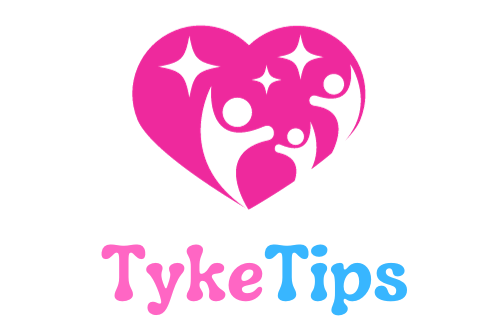When your child is experiencing a meltdown, it may seem natural to try and communicate with them to offer comfort. However, talking during a tantrum can actually exacerbate the situation due to how their brain functions. Instead of engaging in conversation, focus on maintaining a calm presence to help your child feel secure. This video provides examples and tips on handling meltdowns both at home and in public settings, offering insight on how to effectively manage such challenging situations to promote a sense of safety for your child.
During a meltdown, your child needs to feel safe above all else. By showcasing a calm demeanor and avoiding excessive talking, you can convey to their brain that there is no immediate danger, allowing their thinking brain to come back online. Whether at home or in public, remember that your child’s brain functions in the same way during a meltdown, and it is crucial to provide a calming and reassuring presence to help them regulate their emotions in a healthy manner.

Understanding Meltdowns
Talking can worsen a meltdown due to how a child’s brain works
When your child is experiencing a meltdown, it may seem natural to engage them in conversation to comfort them. However, have you noticed that the more you talk, the more intense the meltdown becomes? This phenomenon occurs because of how a child’s brain functions during such emotional outbursts. The key to assisting a child in managing a meltdown is not excessive dialog but rather a different approach that promotes a sense of safety and security.
Child’s thinking brain goes offline during a meltdown
During a meltdown, a child’s emotional brain, specifically the amygdala, signals an alert that triggers survival mode. This response does not necessarily involve genuine danger but can be as simple as not getting the desired cup or toy. Understandably, to an adult, these issues may seem minor. Nonetheless, to a child’s developing brain, these frustrated or angry feelings can be overwhelming. This emotional overload causes the brain to shift into survival mode, temporarily shutting down the thinking part of the brain, the prefrontal cortex. Consequently, their ability to comprehend and process language diminishes significantly.
Focus on being a calm presence to help child feel safe
To effectively assist a child during a meltdown, it is essential to focus on providing a calming presence to establish a sense of safety. Children need to feel secure before their thinking brain can engage and comprehend communication. When their emotional brain is in survival mode, attempting to talk them out of the meltdown can be counterproductive. Instead of engaging in dialogue, demonstrating a composed demeanor and being physically present with minimal verbal interference can help the child transition out of the meltdown state.
Handling Meltdowns at Home
Give simple choices to prevent escalation
When managing meltdowns at home, offering simple choices can sometimes prevent further escalation of the situation. Giving children options allows them to feel a sense of control and empowerment, potentially easing their emotional distress.
Examples of effective strategies at home
Effective strategies for handling meltdowns at home include providing a safe and quiet space for the child, maintaining a calm demeanor, offering comfort through physical touch, and refraining from using excessive verbal communication until the child begins to calm down.
Handling Meltdowns in Public Settings
Strategies for managing meltdowns in public
Managing meltdowns in public settings requires strategies that focus on creating a calm environment despite external stimuli. Finding a quiet corner, maintaining non-threatening body language, and acknowledging the child’s emotions without excessive verbal intervention can assist in de-escalating the meltdown.
Tips for remaining calm and composed in public
To remain composed during a child’s meltdown in public, it is crucial to remember that the child’s behavior is not a reflection of your parenting skills. Prioritize the child’s emotional needs over external judgment, maintain a supportive and understanding attitude, and seek ways to establish a safe environment for the child to calm down.
Dealing with Toddler Tantrums
Helpful tips for parents dealing with toddler tantrums
Parents dealing with toddler tantrums can benefit from setting clear boundaries, maintaining consistency in discipline, using positive reinforcement, and practicing patience and empathy when addressing emotional outbursts.
Ways to manage and diffuse tantrum situations
Managing and diffusing toddler tantrums involves acknowledging the child’s emotions, providing comfort and reassurance through physical touch, redirecting their focus to a positive activity, and encouraging effective communication skills to express feelings.
Addressing Whining Behavior
Whining as a common child behavior that needs attention
Whining is a prevalent child behavior that often signals unmet needs or emotional distress. Addressing whining behavior requires understanding the underlying reasons behind it and adopting effective strategies to promote communication and emotional regulation.
Effective ways to handle whining moments
Handling whining moments effectively involves acknowledging the child’s feelings, setting clear expectations and consequences, teaching alternative communication methods, and offering positive reinforcement for using appropriate language to express needs.
Reducing Whining Frequency
Strategies to reduce frequency and intensity of whining
Reducing the frequency and intensity of whining behavior entails establishing consistent routines, providing opportunities for the child to make choices, modeling respectful communication, and promoting self-regulation skills through emotional coaching and positive reinforcement.
Encouraging children to ask for needs without complaining
Encouraging children to articulate their needs without resorting to whining involves fostering open communication, validating their emotions, teaching problem-solving skills, and praising efforts to express desires and concerns in a constructive manner.
Guidance on Responding Positively
Watch videos for guidance on responding positively to whining
Watching informative videos can offer valuable insights and practical strategies for responding positively to whining behavior. Learning from experts and incorporating evidence-based techniques can enhance parental effectiveness in addressing and managing challenging behaviors.
Tips for encouraging better communication skills
To promote better communication skills in children, parents can utilize positive reinforcement, active listening, validating emotions, modeling respectful discourse, and providing opportunities for children to practice articulating their feelings and needs effectively. By cultivating a supportive and communicative environment, parents can empower their children to express themselves confidently and respectfully.

